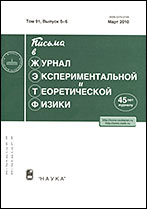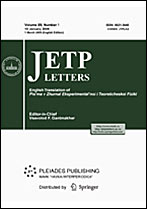|
This article is cited in 9 scientific papers (total in 9 papers)
OPTICS AND NUCLEAR PHYSICS
Physical processes accompanying laser ablation in liquid
N. A. Inogamovab, V. V. Zhakhovskyac, V. A. Khokhlovba
a Joint Institute for High Temperatures, Russian Academy of Sciences, Moscow, 125412 Russia
b Landau Institute for Theoretical Physics, Russian Academy of Sciences, Chernogolovka, Moscow region, 142432 Russia
c All-Russia Research Institute of Automatics, Moscow, 127055 Russia
Abstract:
Ablation in liquid is numerically simulated with molecular dynamics and hydrodynamics codes. Laser radiation passes through a transparent liquid, illuminates a metal target, and is absorbed in it and reflected from it. The range of absorbed fluences $F_{abs}$ about 1 J/cm$^2$ is considered, which is of technological interest: the number of nanoparticles formed per laser pulse below these values is small, whereas the optical breakdown of the liquid occurs above them. A theory is developed to estimate the mass and composition of nanoparticles formed by laser radiation using simulation data and thermodynamic information (equation of state of matter).
Received: 18.11.2021
Revised: 20.11.2021
Accepted: 21.11.2021
Citation:
N. A. Inogamov, V. V. Zhakhovsky, V. A. Khokhlov, “Physical processes accompanying laser ablation in liquid”, Pis'ma v Zh. Èksper. Teoret. Fiz., 115:1 (2022), 20–27; JETP Letters, 115:1 (2022), 16–22
Linking options:
https://www.mathnet.ru/eng/jetpl6580 https://www.mathnet.ru/eng/jetpl/v115/i1/p20
|


|





 Contact us:
Contact us: Terms of Use
Terms of Use
 Registration to the website
Registration to the website Logotypes
Logotypes








 Citation in format
Citation in format 
